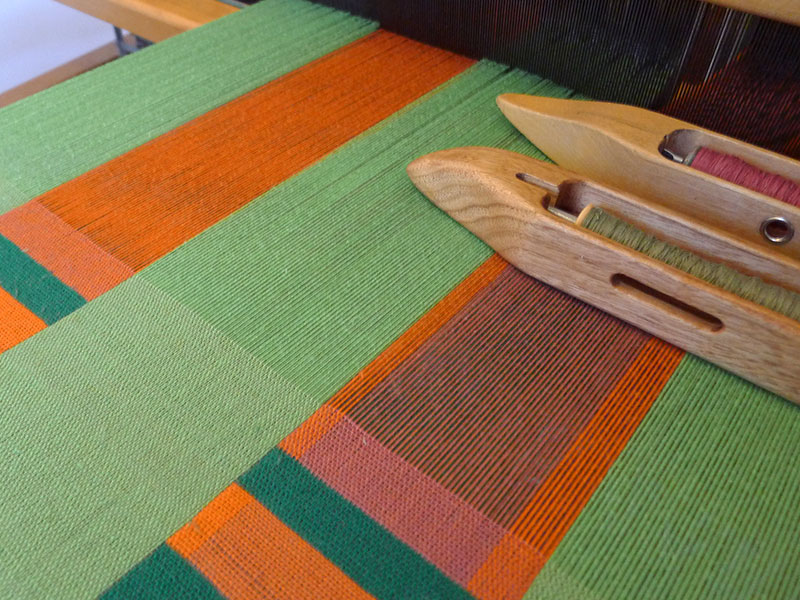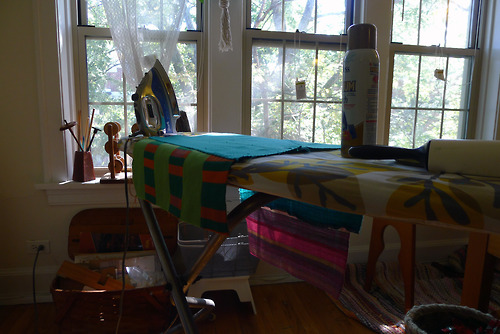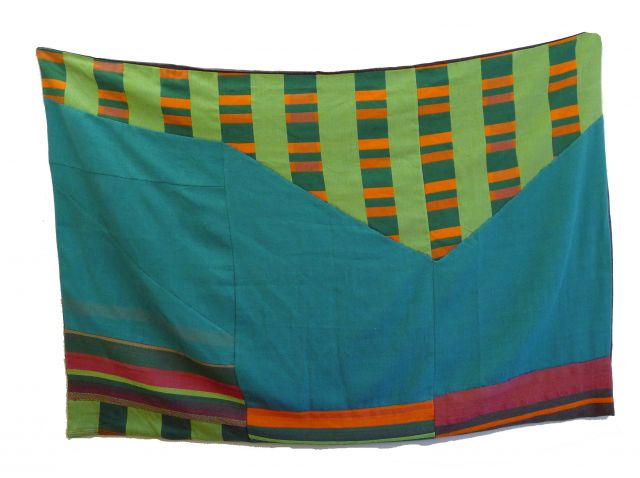July 06, 2014
This is how the coastal cloth came to be
szmuda presents: hand weaver's update
I started this newsletter to inform sophisticated individuals of what I am up to when I weave. I'm going to try and focus on one project at a time, over time. Weaving is boring, I'll try to make it interesting.
---
At the home of an old friend, his roommate said, "you're a weaver? do you know who Else Regensteiner is?"
I said "yes, of course, The Art of Weaving."
"this is her house."
They showed me her loom room in the basement. I stood where her loom once stood. I may have sat down. I don't remember. Unable to respond in a coherent way to this coincidence I have decided to weave them a wall hanging. Since it will hang in the (former) home of one of the great American weavers, it has to be good.
This is a challenge.

With directions about color, and suggestions about pattern, I sketched the above design. The director of the project, chosen for having at least some enthusiasm about the idea, noted: "makes me feel like california, or maybe florida." It is the coastal cloth, it will be woven in two sets of three panels, each panel (one for each roommate) comprising three cloths interlaced on one loom. It will be woven in cotton, as below:

After taking my time (I insisted on moving, finishing three other projects, and fixing my equipment first) I have finally begun:

This horizontal warping reel setup measures eight yards of yarn. The threads are thin and I need thousands to make this cloth, all the same length. The cage rotates when I push down on the slat in front of me so I can stand in place with my cone of yarn and guide it into a bundle. I made this reel from scrap woods from the lumber store and the assistance of Ben at the Portage Park wood shop. One of my finer wood working achievements (which are few, I usually measure once,) finishing the reel before my classes ran out required taking the bus with an armful of wood in one of the coldest winters in Chicago history while balancing in walking boot designed to protect my broken foot.
The base is oak, the cage is poplar. A lot had to come together to make the coastal cloth possible. And we've just begun.

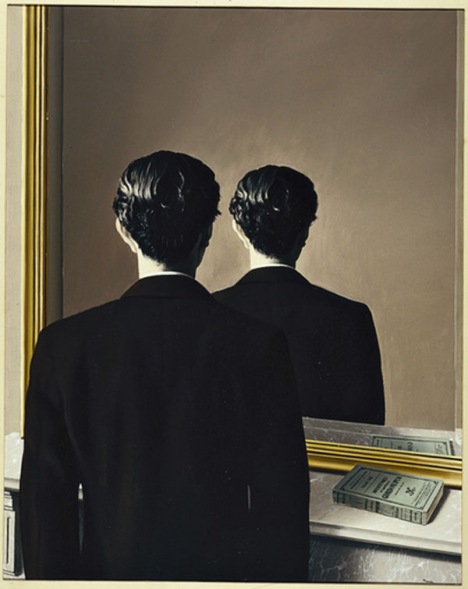

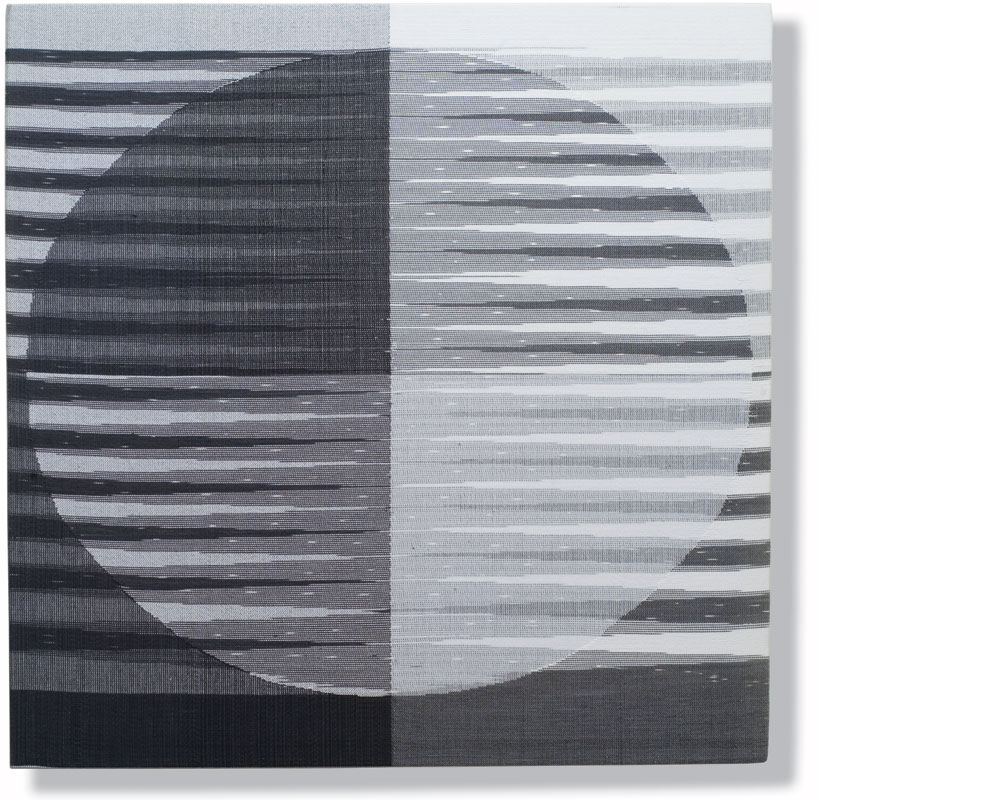

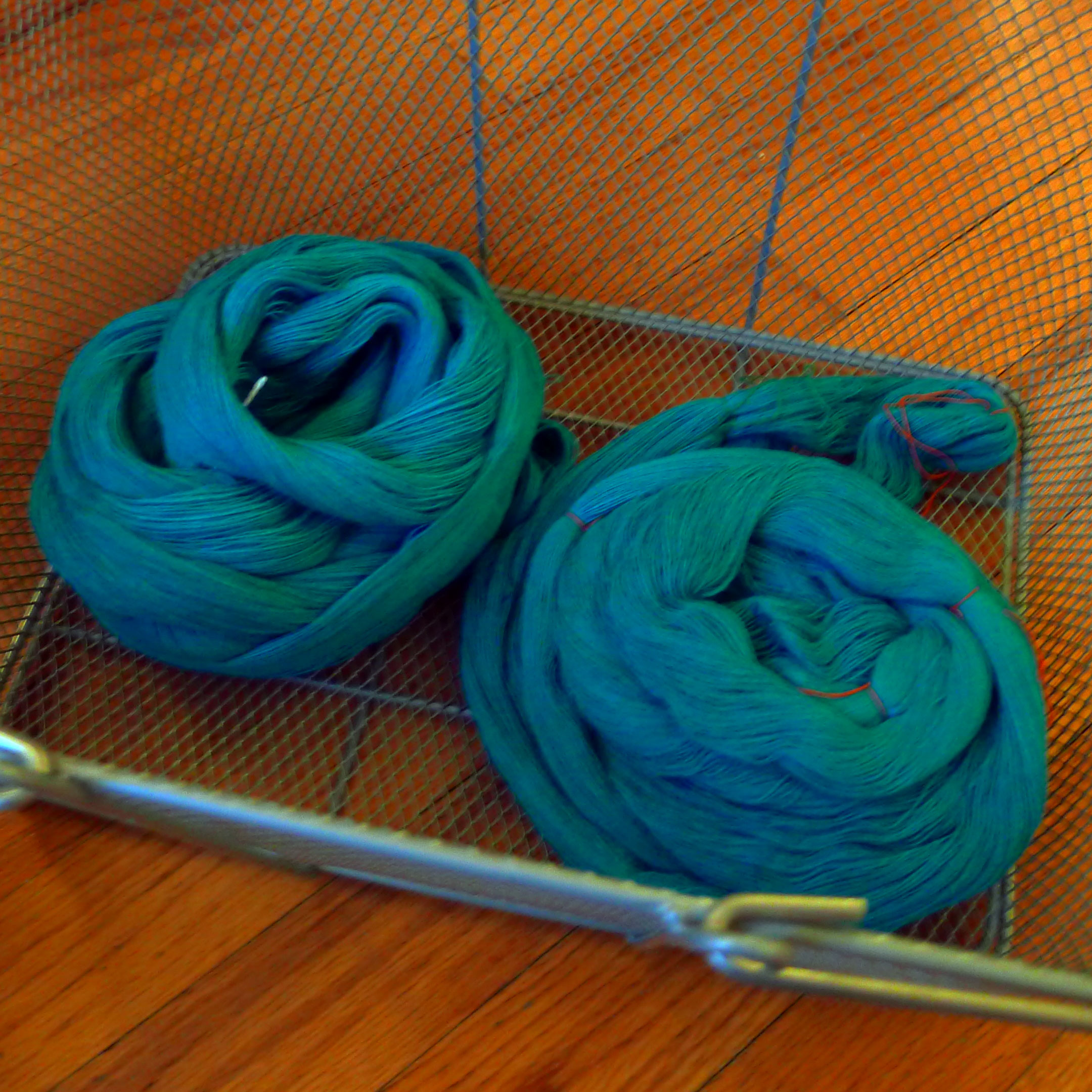
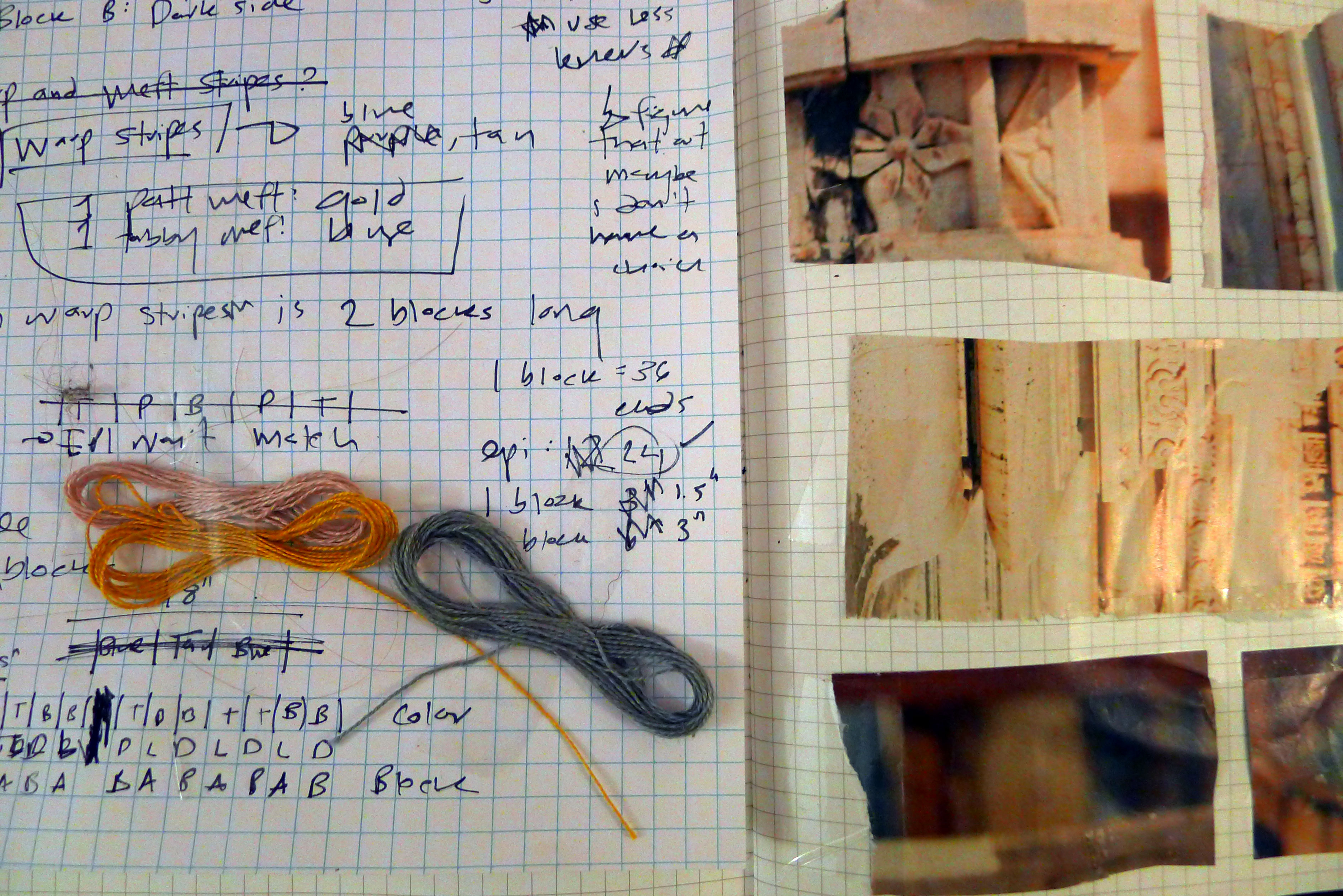
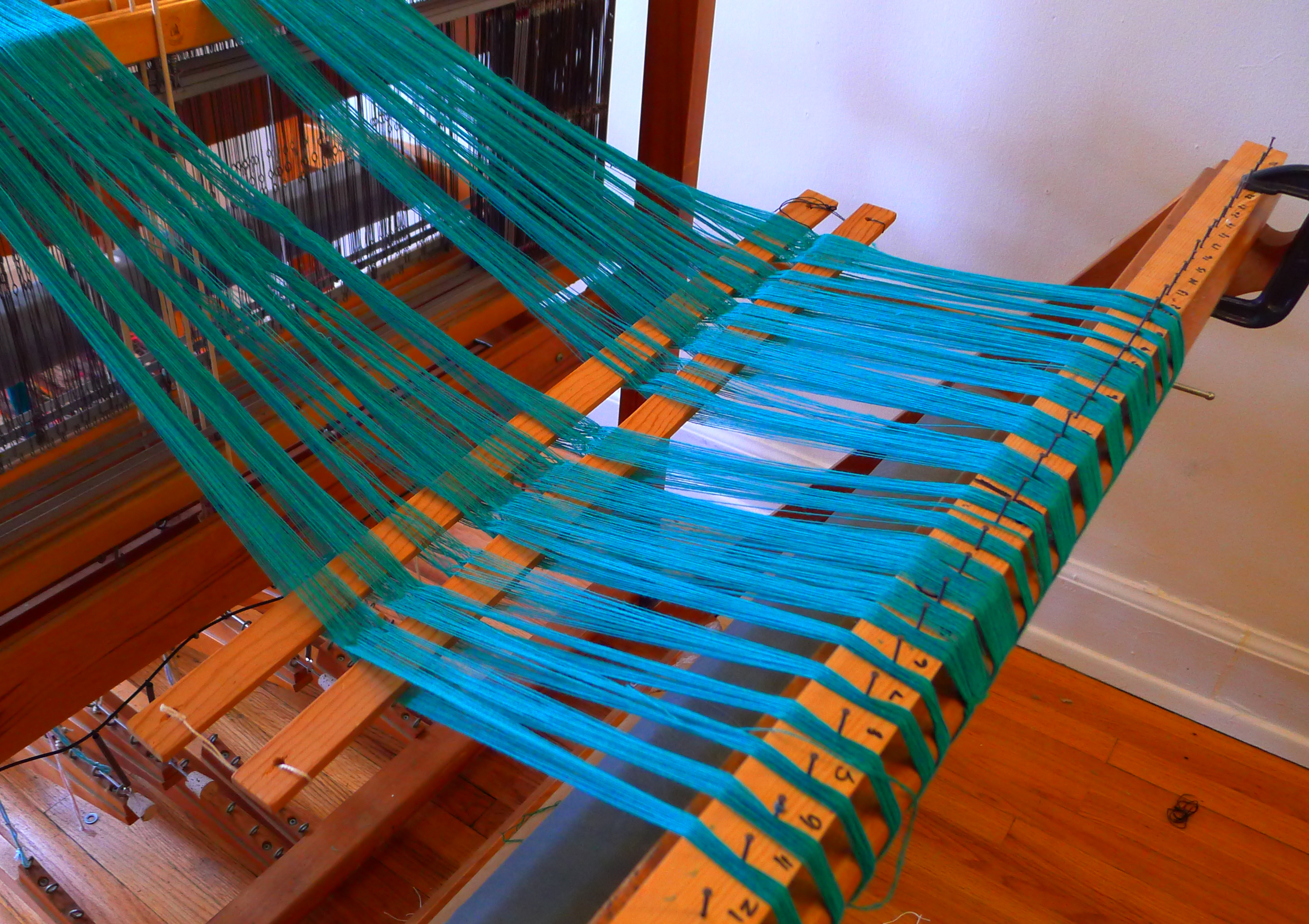
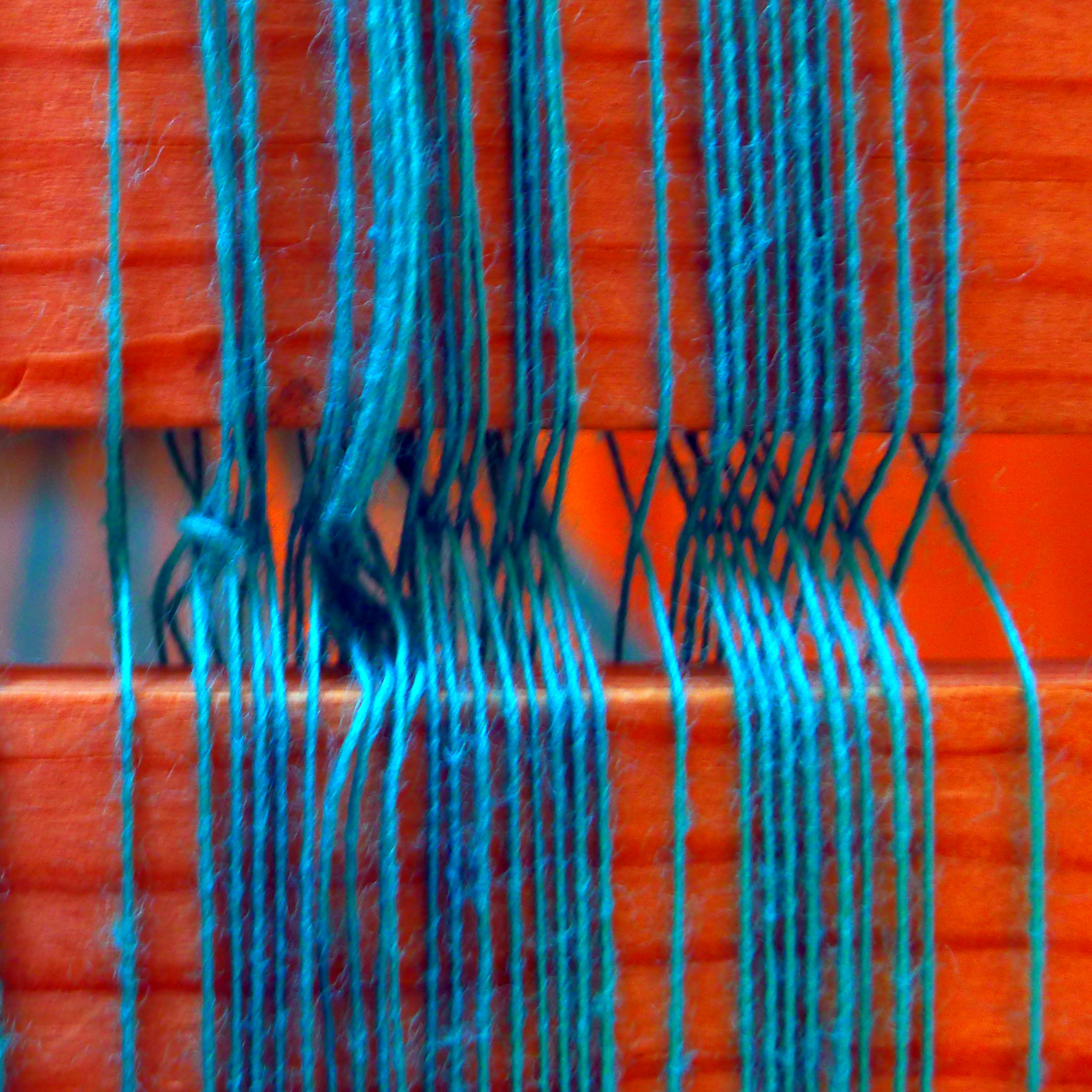
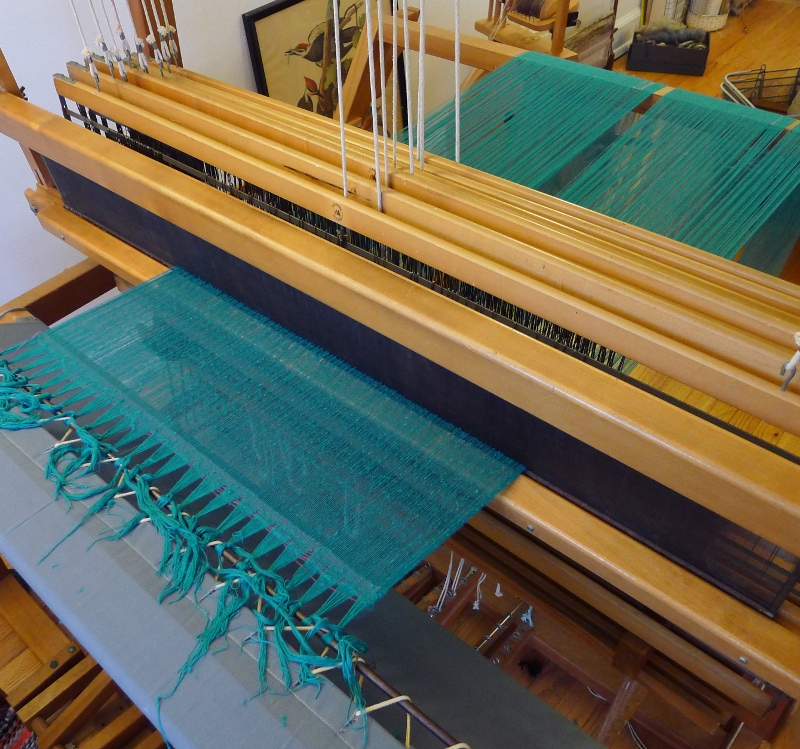

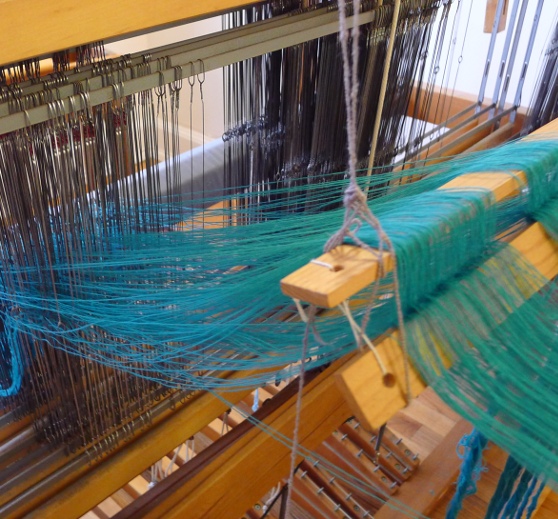
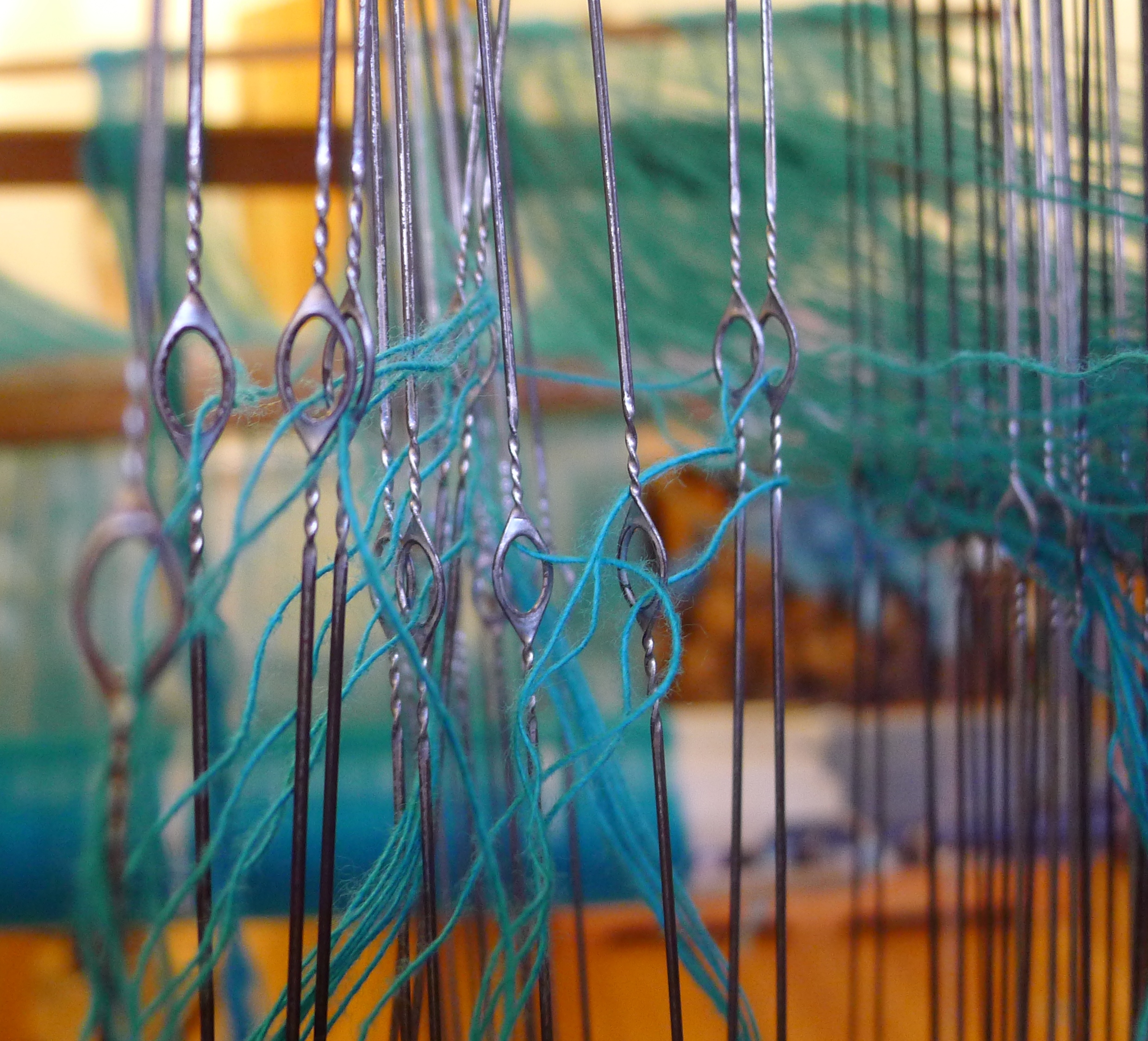

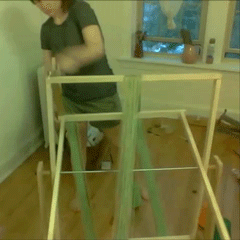
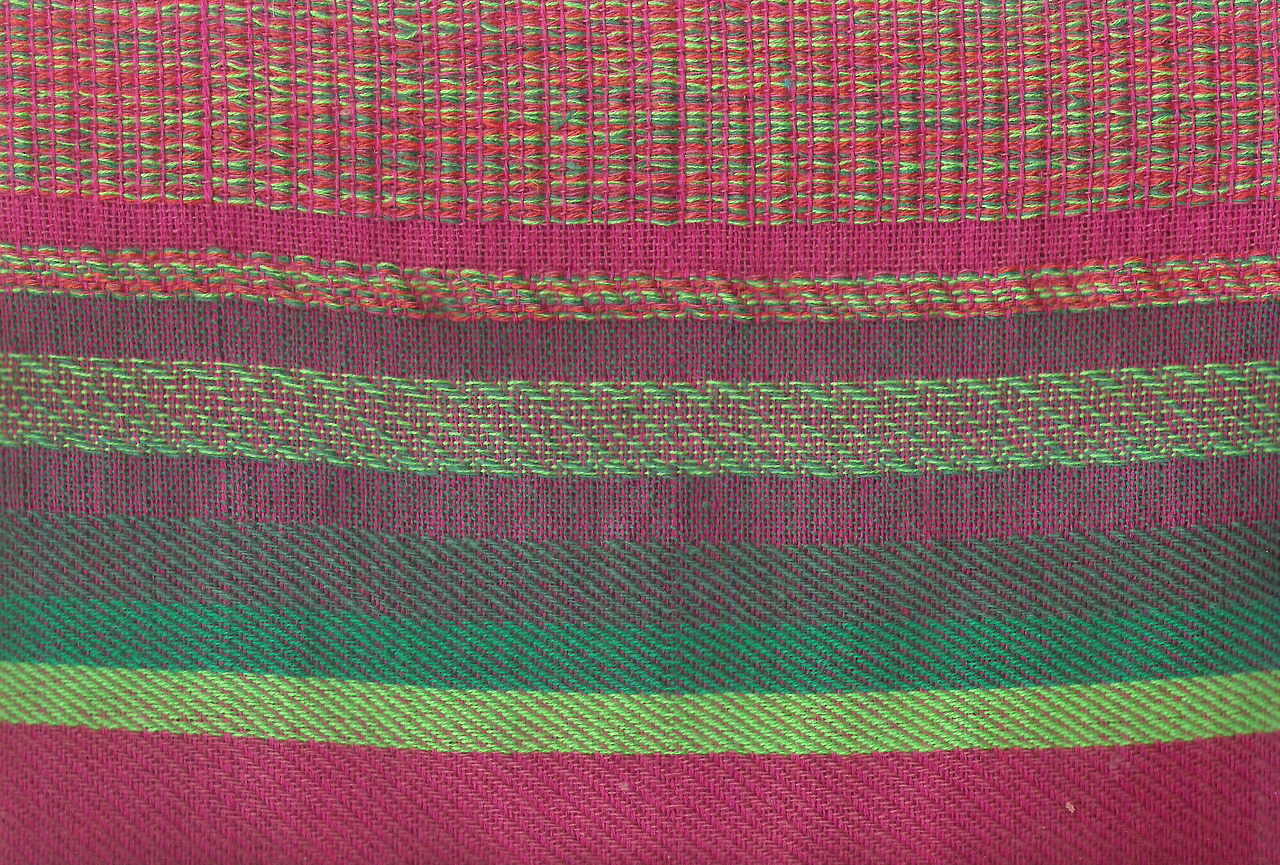
 Ridiculous but true: it is my protest against corporate takeover of social mores, which maintains that corporations are people and that people should be corporations, brand and all, selling themselves at all times to survive.
Ridiculous but true: it is my protest against corporate takeover of social mores, which maintains that corporations are people and that people should be corporations, brand and all, selling themselves at all times to survive. 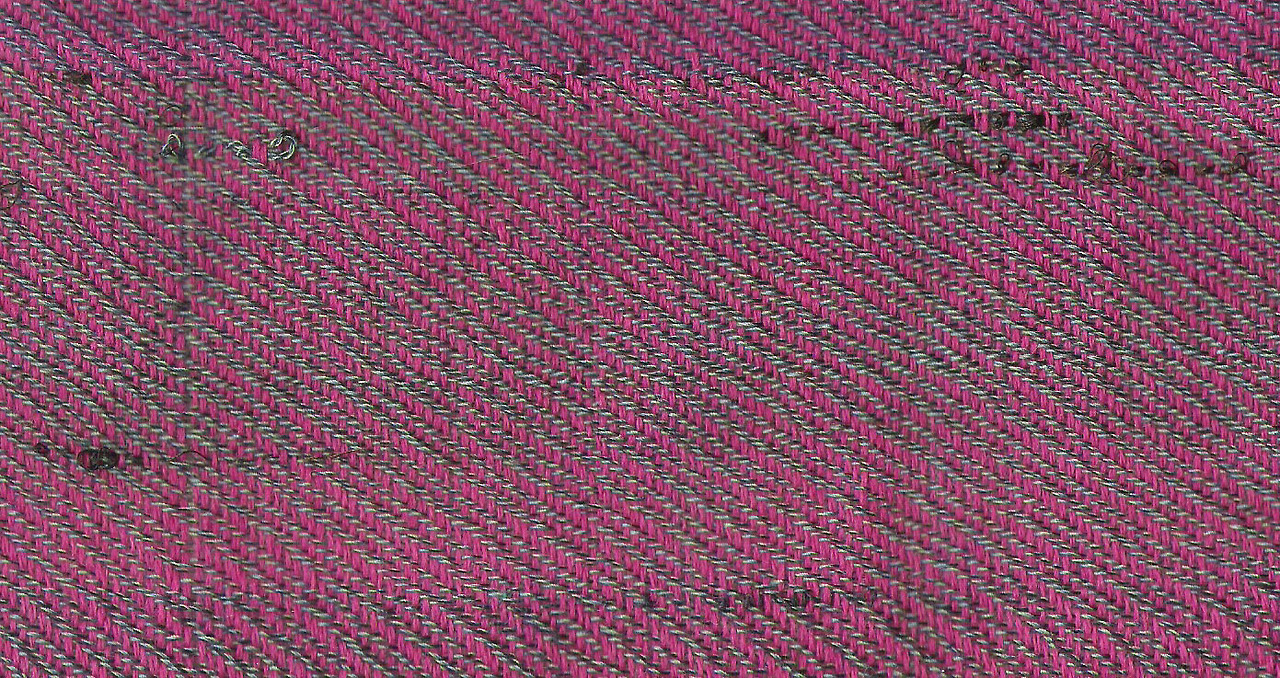 Anyway, the recipients of my car trunk cloth always seem to appreciate that cloth more than I do. As far as I am concerned this multiplies its value tenfold. Thanks to all of you who have accepted my weaving! That one action on your part made the whole thing have a point. It's good to know that at least a small market segment responds well to "total chaos."
Anyway, the recipients of my car trunk cloth always seem to appreciate that cloth more than I do. As far as I am concerned this multiplies its value tenfold. Thanks to all of you who have accepted my weaving! That one action on your part made the whole thing have a point. It's good to know that at least a small market segment responds well to "total chaos."